The latest details about Russia’s attack on Ukraine:
Biden will ban Russia from US airspace amid Ukraine invasion, sources say
7:50 p.m. EST March 1
President Joe Biden will vow to make Vladimir Putin “pay a price” for Russia’s invasion of Ukraine in his first State of the Union address, rallying allies abroad while also outlining his plans at home to fight inflation and the fading but still dangerous coronavirus.
In addition to recounting U.S. and allied economic sanctions against Russia, Biden planned to announce that the U.S. is following Canada and the European Union in banning Russian planes from its airspace in retaliation for the invasion of Ukraine, according to two people familiar with his remarks. They spoke only on the condition of anonymity before the speech.

Biden planned in his Tuesday night remarks to highlight the bravery of Ukrainian defenders and the resolve of a newly reinvigorated Western alliance that has worked to rearm the Ukrainian military and cripple Russia’s economy through sanctions. He was set to deliver an ominous warning that without consequences, Russian President Putin’s aggression wouldn’t be contained to Ukraine.
“Throughout our history we’ve learned this lesson – when dictators do not pay a price for their aggression, they cause more chaos,” Biden was to say, according to advance excerpts released by the White House. “They keep moving. And, the costs and threats to America and the world keep rising.”
RELATED
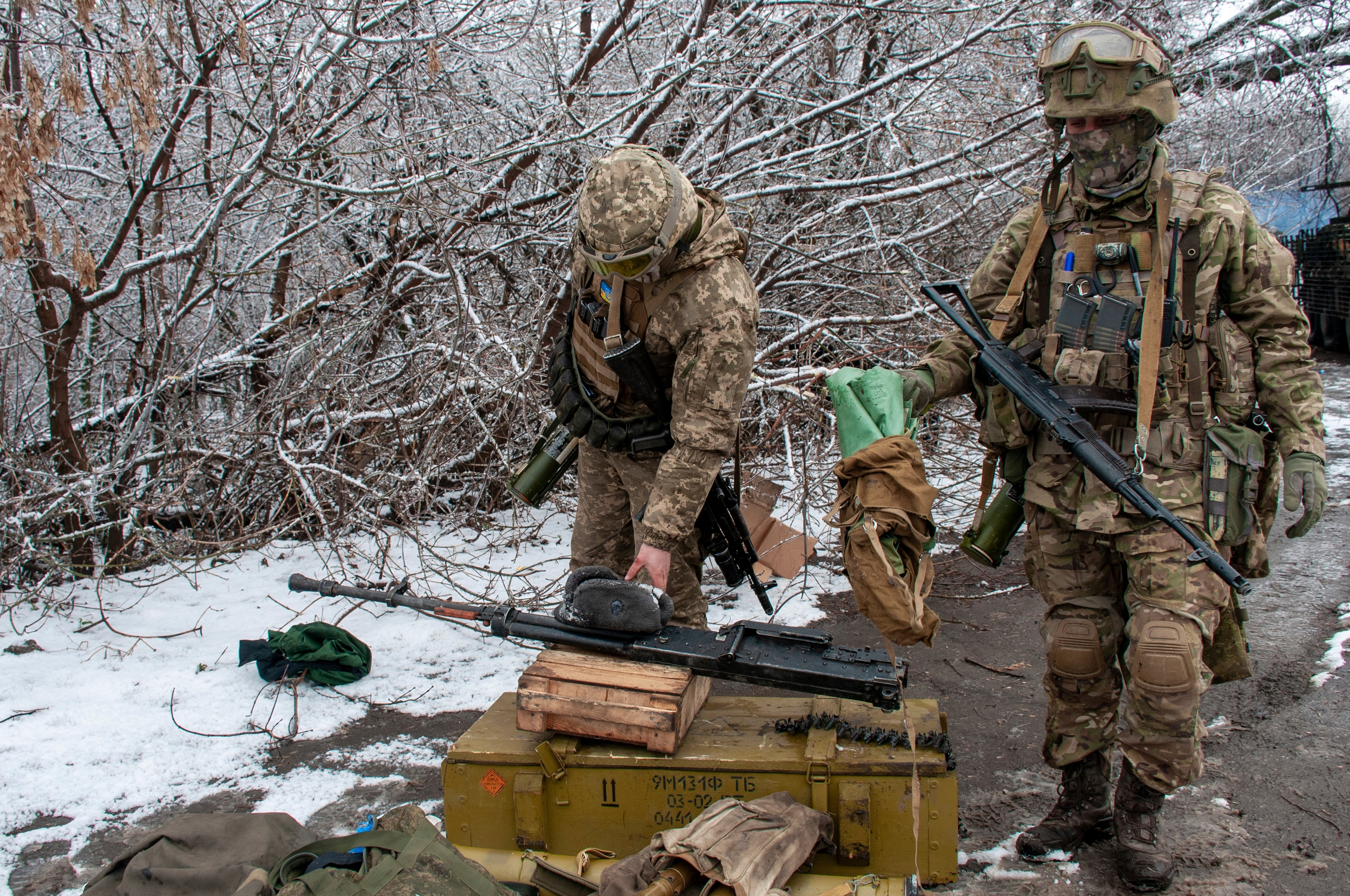
Even before the Russian invasion sent energy costs skyrocketing, prices for American families had been rising, and the COVID-19 pandemic continues to hurt families and the country’s economy.
Biden planned to outline plans to address inflation by reinvesting in American manufacturing capacity, speeding supply chains and reducing the burden of childcare and eldercare on workers.
“We have a choice,” Biden was to say. “One way to fight inflation is to drive down wages and make Americans poorer. I have a better plan to fight inflation. Lower your costs, not your wages.”
Set against disquiet at home and danger abroad, the White House had conceived Tuesday night’s speech as an opportunity to highlight the improving coronavirus outlook, rebrand Biden’s domestic policy priorities and show a path to lower costs for families grappling with soaring inflation. But it has taken on new significance with last week’s Russian invasion of Ukraine and nuclear saber-rattling by Putin.
In an interview with CNN and Reuters, Zelenskyy said he urged Biden to deliver a strong and “useful” message about Russia’s invasion. Ahead of the speech, the White House announced that Ukrainian Ambassador to the U.S. Oksana Markarova would join first lady Jill Biden in the galleries to watch Biden’s address.
Russian troops step up attacks on urban areas
6:35 p.m. EST March 1
Russian forces escalated their attacks on crowded urban areas Tuesday, bombarding the central square in Ukraine’s second-biggest city and Kyiv’s main TV tower in what the country’s president called a blatant campaign of terror.
“Nobody will forgive. Nobody will forget,” President Volodymyr Zelenskyy vowed after the bloodshed on the square in Kharkiv.
Ukrainian authorities said five people were killed in the attack on the TV tower, which is a couple of miles from central Kyiv and a short walk from numerous apartment buildings. A TV control room and power substation were hit, and at least some Ukrainian channels briefly stopped broadcasting, officials said.
Zelenskyy’s office also reported a powerful missile attack on the site of the Babi Yar Holocaust memorial, near the tower. A spokesman for the memorial said a Jewish cemetery at the site, where Nazi occupiers killed more than 33,000 Jews over two days in 1941, was damaged, but the extent would not be clear until daylight.
At the same time, a 40-mile (64-kilometer) convoy of hundreds of Russian tanks and other vehicles advanced slowly on Kyiv, the capital city of nearly 3 million people, in what the West feared was a bid by Russian President Vladimir Putin to topple the government and install a Kremlin-friendly regime.
The invading forces also pressed their assault on other towns and cities, including the strategic ports of Odesa and Mariupol in the south.
Day 6 of the biggest ground war in Europe since World War II found Russia increasingly isolated, beset by tough sanctions that have thrown its economy into turmoil and left the country practically friendless, apart from a few nations like China, Belarus and North Korea.
As the fighting in Ukraine raged, the death toll remained unclear. One senior Western intelligence official estimated that more than 5,000 Russian soldiers had been captured or killed. Ukraine gave no overall estimate of troop losses.
Britain’s Defense Ministry said it had seen an increase in Russian air and artillery strikes on populated urban areas over the past two days. It also said three cities — Kharkiv, Kherson and Mariupol — were encircled by Russian forces.
‘Concrete evidence’ Russia using cluster munitions, rights groups say
3:25 p.m. EST March 1
Rights groups and observers say Russia is using cluster bombs in its invasion of Ukraine, a charge Moscow denies. If confirmed, deployment of the weapon, especially in crowded civilian areas, would usher in new humanitarian concerns in the conflict, Europe’s largest ground war in generations.
Proponents of banning cluster bombs say they kill indiscriminately and endanger civilians long after their use. From Syria and Yemen to the Balkans, Afghanistan and Southeast Asia, unexploded ordnance from cluster bombs continues to kill and maim people years or even decades after the munitions were fired.
Though many countries have joined a global convention limiting their use, cluster munitions are still used in conflict zones around the world.
Here is a closer look at the weapon and why its use sparks particular concern:
WHAT IS A CLUSTER BOMB?
Cluster bombs are weapons that open in the air, releasing submunitions, or “bomblets,” that are dispersed over a large area, intended to wreak destruction on multiple targets at once. Cluster bombs can be delivered by planes, artillery and missiles, according to the International Committee of the Red Cross.
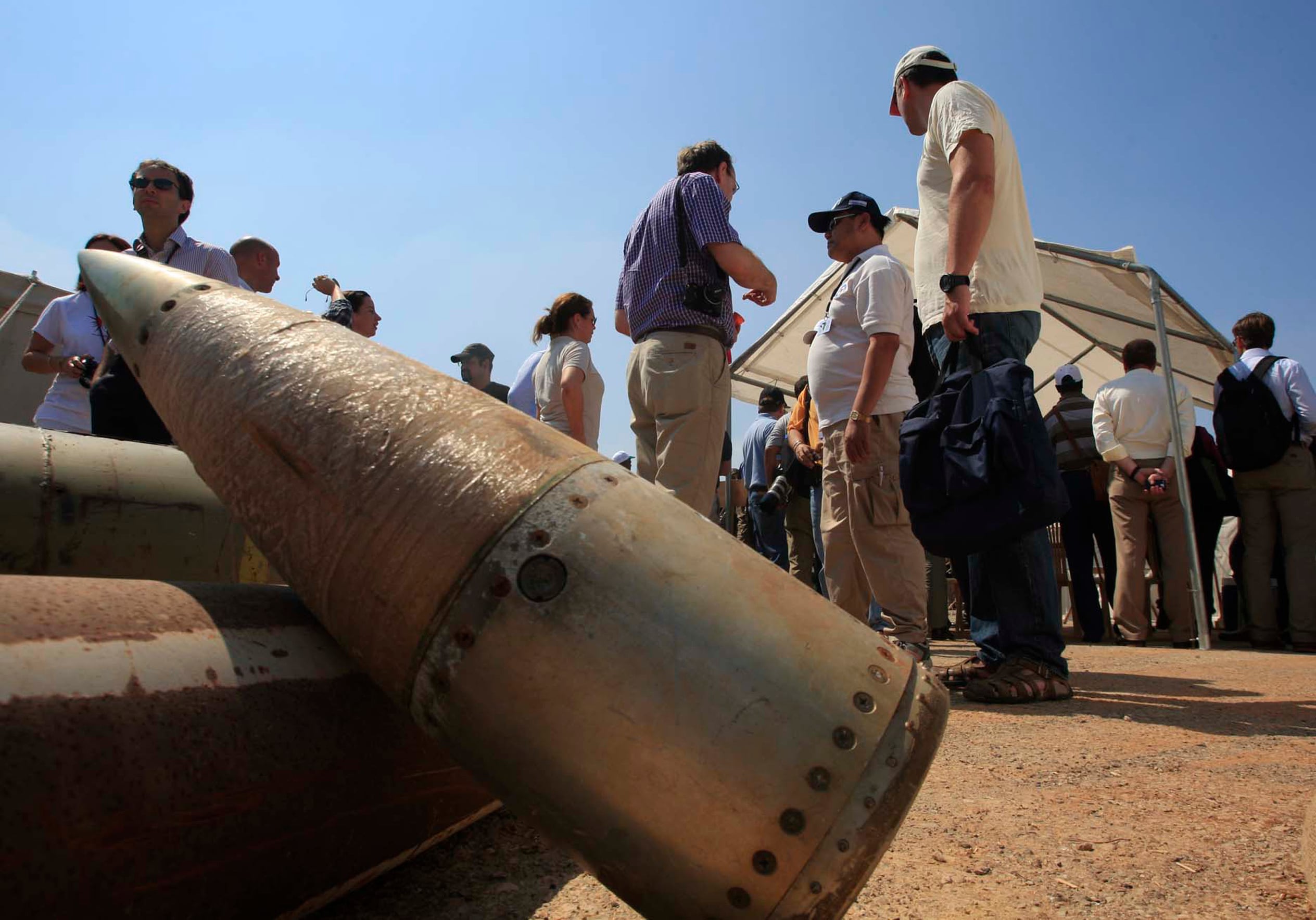
Beyond the initial harm caused by the munitions upon impact, bomblets have a high rate of failure to explode, up to 40% in some recent conflicts, according to the ICRC.
That leaves swaths of land dotted with bomblets that could explode. Return to normal life in those areas becomes hazardous, particularly in heavily populated areas. Some formerly war-torn countries spend years trying to clear unexploded cluster bomblets.
IS USING THEM A WAR CRIME?
Use of cluster bombs itself does not violate international law, but using them against civilians can be a violation. As in any strike, determining a war crime requires looking at whether the target was legitimate and if precautions were taken to avoid civilian casualties.
“The part of international law where this starts playing (a role), though is indiscriminate attacks targeting civilians,” Human Rights Watch’s associate arms director Mark Hiznay told The Associated Press. “So that’s not necessarily related to the weapons, but the way the weapons are used.”
A convention banning the use of cluster bombs has been joined by more than 120 countries who agreed not to use, produce, transfer or stockpile the weapons and to clear them after they’ve been used.
Russia and Ukraine have not joined that convention. Neither has the United States.
WHERE HAVE THEY BEEN USED?
The bombs have been deployed in many recent conflicts.
Syrian government troops have often used cluster munitions — supplied by Russia — against opposition strongholds during that country’s civil war, frequently hitting civilian targets and infrastructure.
Israel has used cluster bombs in civilian areas in south Lebanon, including during the 1982 invasion that saw Israeli troops reach the capital Beirut.
During the monthlong 2006 war with Hezbollah, Human Rights Watch and the United Nations accused Israel of firing as many as 4 million cluster munitions into Lebanon. That has left unexploded ordnance that threatens Lebanese civilians to this day.
The Saudi-led coalition in Yemen has been criticized for its use of cluster bombs in the war with the Iran-backed Houthi rebels that has ravaged the southern Arabian country.
In 2017, Yemen was the second deadliest country for cluster munitions after Syria, according to the U.N. Children have been killed or maimed long after the munitions originally fell, making it difficult to know the true toll.
The last large-scale American use of cluster bombs was during the 2003 Iraq invasion, according to the Pentagon. The U.S. initially considered cluster bombs an integral part of its arsenal during the invasion of Afghanistan that began in 2001, according to HRW. In the first three years, it is estimated the U.S.-led coalition dropped more than 1,500 cluster bombs in Afghanistan.
The U.S. Defense Department had been due by 2019 to stop use of any cluster munitions with a rate of unexploded ordnance greater than 1%. But the Trump Administration rolled back that policy, allowing commanders to approve use of such munitions.
Cluster munitions were also used in the Balkan wars in the 1990s. In the 1980s the Russians made heavy use of cluster bombs during its 10-year invasion of Afghanistan. As a result of decades of war, the Afghan countryside remains one of the heaviest mined countries in the world.
WHAT’S HAPPENING IN UKRAINE?
Russian forces have “most definitely” used cluster bombs in Ukraine, Human Rights Watch’s Hiznay said.
He pointed to at least two instances: a missile attack that hit outside a hospital in the town of Vuhledar on the first day of the invasion last week. and another Monday on Ukraine’s second largest city, Kharkiv, with a population of 1.4 million.
Hiznay retweeted photos of what he said was unexploded 9N235 cluster submunitions scattered around in Kharkiv. Human Rights Watch said four people were killed in the Vuhledar strike.
Rights groups have said three people were killed after Russian cluster bombs hit near a pre-school in the northeastern city of Okhtyrka. The open-source intelligence group Bellingcat says that its researchers found cluster munitions in that strike as well as multiple cluster attacks in Kharkiv.
Amnesty International said Russian forces have a “shameful record of using cluster munitions in populated areas.”
Justin Bronk, a research fellow at Royal United Services Institute, a London defense think tank, said images of munitions parts recovered from residential areas of Kharkiv are “concrete evidence” that Russia is using cluster bombs.
“Their use suggests the Russians are trying to break morale, inflict terror on the on the civilian population and the defenders in order to try and force a negotiation or just retreat,” he said.
Russia denies using cluster munitions in Ukraine.
Russian advance on Kyiv at a standstill, US official says
11:54 a.m. EST March 1
Russian troops staged around the outside of Ukraine’s capital city appear to be in a holding pattern of some kind, a senior U.S. defense official told reporters Tuesday.
Formations that had been moving toward Kyiv are essentially in the same spot today as they were Monday, the official sending, roughly 17 miles outside the city center.
“We believe that that’s for a number of reasons,” the official said. “Obviously, the resistance that they’re facing, the fuel and sustainment problems that they’re having. We are also picking up signs that they’re having problems feeding their troops, that they’re not only they’re running out of gas, but they are running out of food.”
The Pentagon’s assessment echoes multiple reports from recent days, that Russian troops are looking for fuel and sustenance as they roll toward Kyiv.
RELATED
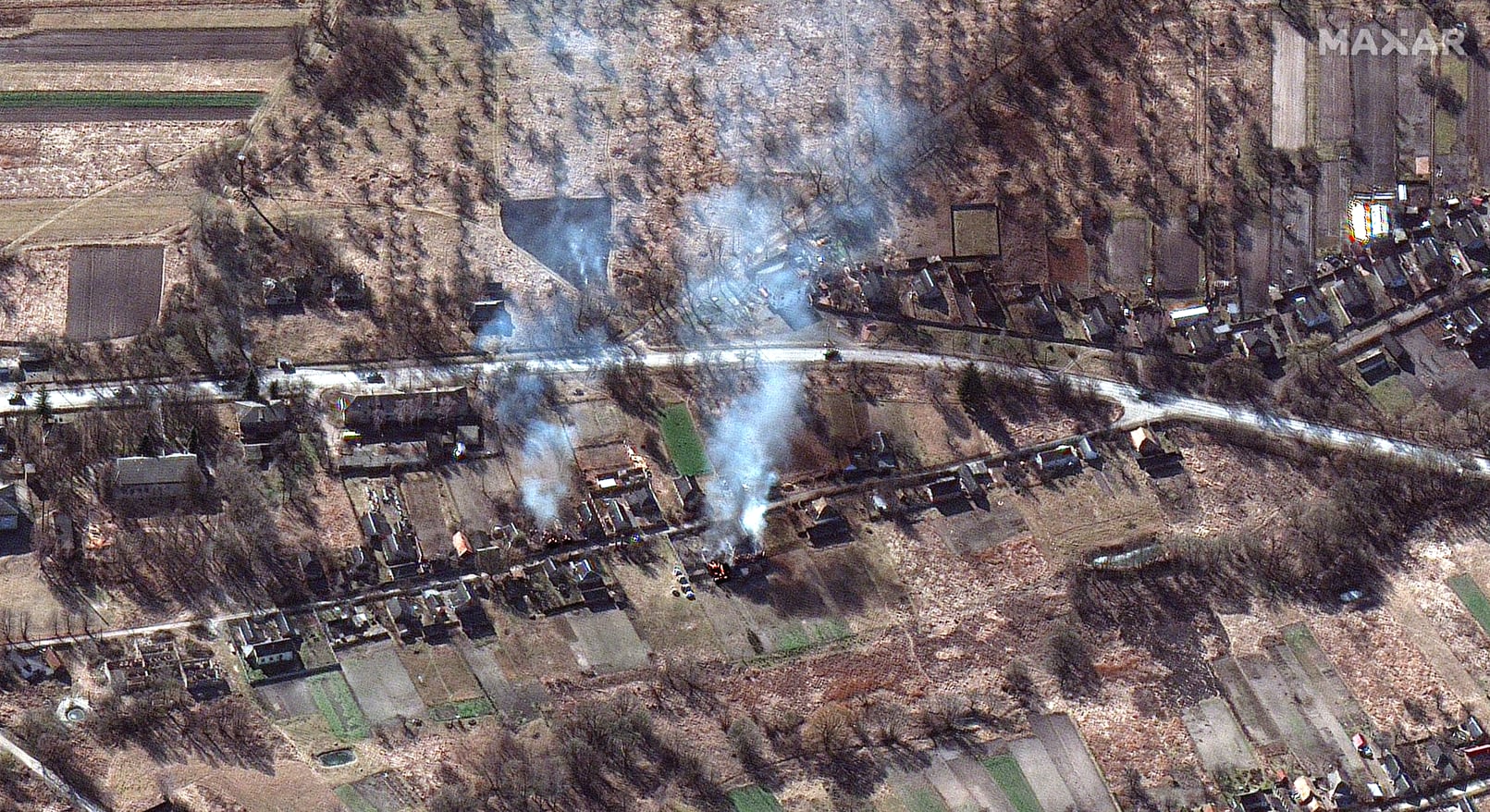
There’s also the possibility, the official said, that the Russians are taking a strategic pause to regroup after a possibly unanticipated defense from the Ukrainian armed forces.
“There has been in the last six days evidence of a certain risk-averse behavior by the Russian military,” the official said. “Now I say risk-averse, I mean risk to their own force.”
Without commenting on whether Russia’s initial invasion plans have been upended, the official echoed other media reports that many of the Russian troops seem ill-prepared for the fight.
“We do believe that a significant number of them are conscripts — very young men drafted into service,” the official said. “And apparently ... not all of them were apparently fully trained and prepared or even aware that they were going to be sent in to a combat operation.”
The official said that while the Pentagon assesses that the Russians have launcher systems that could be used for a thermobaric weapons, “we cannot confirm the presence of a thermobaric weapon and we cannot confirm the use of a thermobaric weapons, but we certainly believe that they have the launching systems capable of using basically a fuel air explosive that’s fired by rocket.
The Pentagon doesn’t believe that Belarusian troops have entered Ukraine, the official said.
Russia has raised the specter of nuclear war
11:35 a.m. EST March 1
NATO’s chief said Tuesday that, despite Russia’s threats about nuclear weapons, the alliance sees no need to change its own nuclear weapons alert level.
The alliance’s secretary-general, Jens Stoltenberg, spoke to The Associated Press following talks on European security with Polish President Andrzej Duda at an air base in Lask, central Poland, where NATO’s Polish and U.S. fighter jets F-15 and F-16 are based.
“We will always do what is needed to protect and defend our allies, but we don’t think there is any need now to change the alert levels of NATO’s nuclear forces,” Stoltenberg said.
The Kremlin began an invasion of Ukraine last week and on Tuesday shelled the center of the Ukrainian city of Kharkiv. Russia has raised the specter of nuclear war, reporting on Monday that its land, air and sea nuclear forces were on high alert following President Vladimir Putin’s weekend order. NATO itself has no nuclear weapons, but three of its members do — the United States, Britain and France.
“We strongly believe it’s reckless and irresponsible the way Russia is speaking about nuclear weapons,” Stoltenberg said, standing in one of the base’s hangars, which has been turned into a conference room with Polish and NATO flags and jets around it.
Stoltenberg stressed that Russia has signed a number of deals agreeing that nuclear war cannot be won and should not be fought.
He called on Russia to “stop the attacks and withdraw all its forces and engage in good faith in diplomatic efforts” to end the war.
Government delegations from Ukraine and Russia met for talks in southeastern Belarus on Monday, but the outcome was not immediately clear.
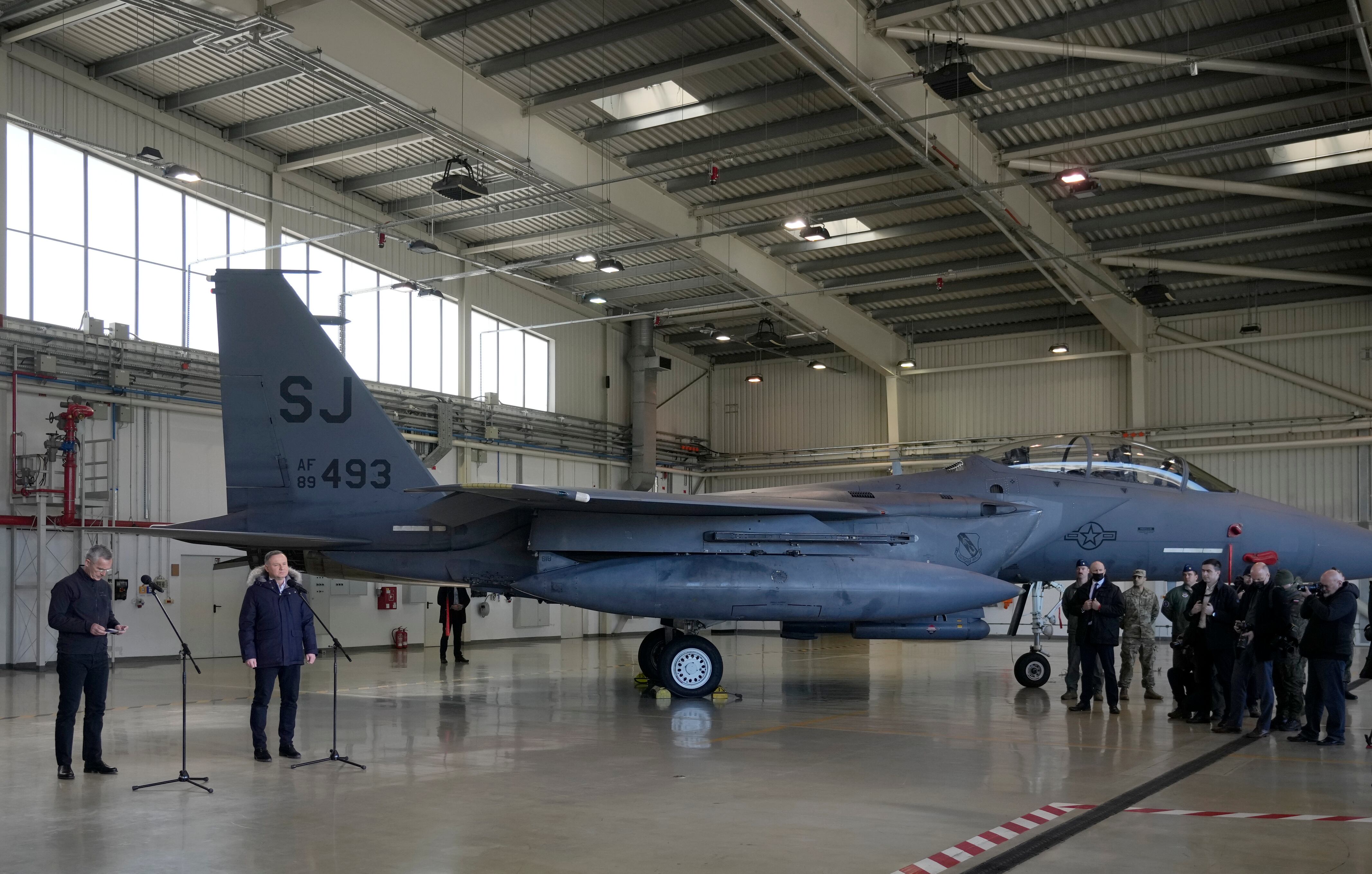
“This is a horrendous, horrific invasion of an innocent country and we see that civilians are killed. It’s a brutality that has to stop immediately,” Stoltenberg said.
The United States recently reinforced the eastern flank of NATO’s territory with some 5,000 additional troops deployed to Poland and Romania. Both NATO countries border Ukraine, which is not part of NATO. A number of French troops were traveling to Romania on Tuesday to further strengthen the region, Stoltenberg said.
The alliance is to discuss further reinforcement steps at its next summit in June in Madrid.
It is NATO’s responsibility to “ensure that we don’t see a development where a conflict in Ukraine spiraled out of control and becomes a full-fledged confrontation between NATO and Russia in Europe,” Stoltenberg said.
He said alliance commanders are insisting that they are “able to maintain deconfliction (contacts) with Russia,” he said.
From Lask, Stoltenberg flew to Tallin, Estonia, for talks on security of the Baltic region which borders Russia and its ally Belarus.
President Zelenskyy appeals for EU membership
7:51 a.m. EST March 1
From his embattled capital city under intense Russian attack, Ukraine President Volodymyr Zelenskyy delivered an impassioned speech to the European Parliament Tuesday, seeking approval to join the European Union.
“The last couple of days, I don’t know how to welcome and greet everybody because I cannot say good morning,” he said through an interpreter. “Or I cannot say good afternoon or good evening. And I cannot and that’s true. Because every day for some people, this day is not good. For some people this day is the last one. I speak today now about my citizens of Ukraine who are defending and paid the ultimate price. They are defending freedom.
“I don’t read off the paper,” he continued. “Because paper fades in the life of my country and now we’re dealing with reality. We’re dealing with killed people. And, you know, I believe that today we’re giving lives for families. For the right for freedom. For the desire to be equal as much as you are. We’re giving away our best people. The strongest ones. the most value-based ones. Ukrainians are incredible.”
This was a difficult morning, Zelenskyy said.
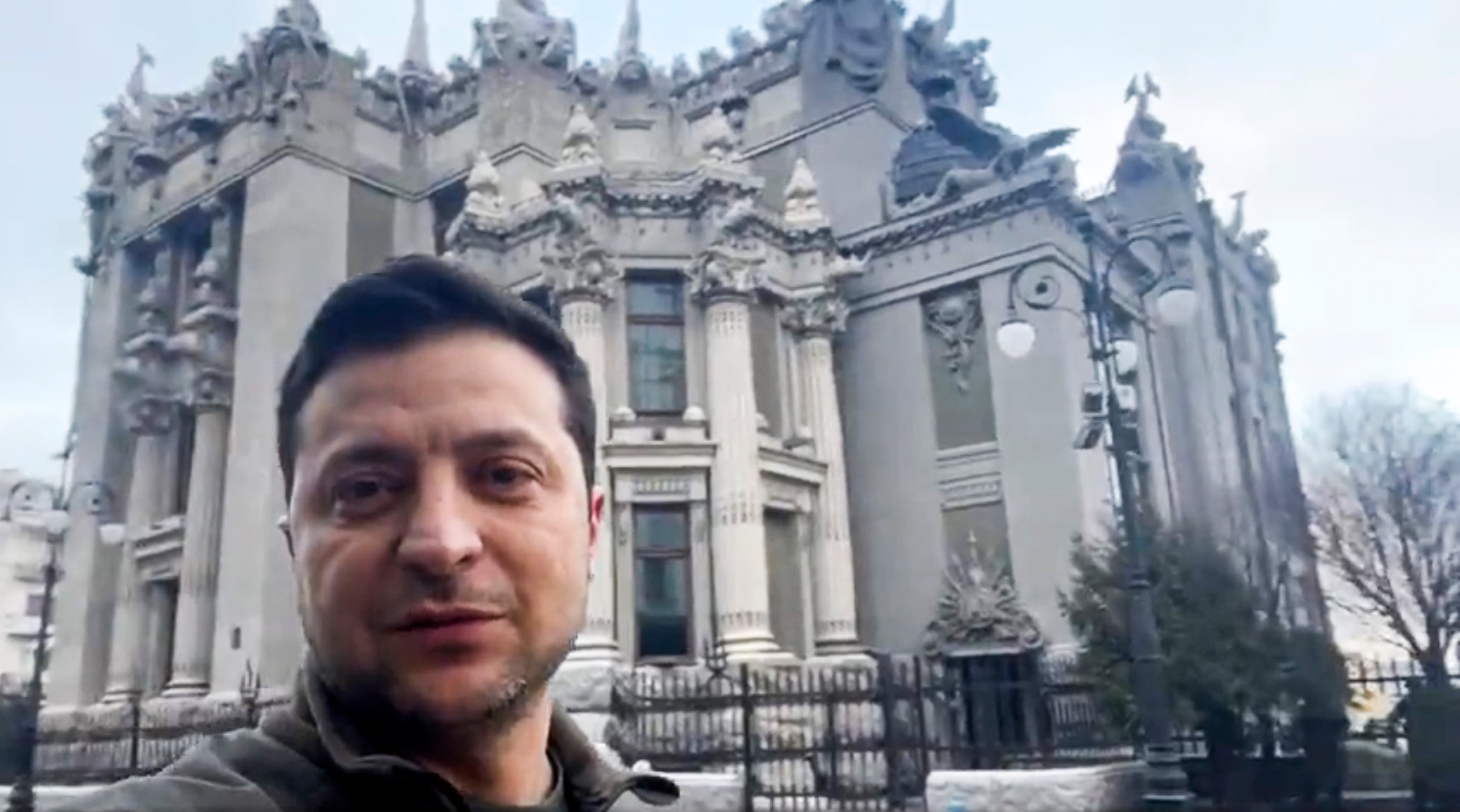
“This morning was a very tragic one for us,” he said. “Two cruise missiles hit Kharkiv, the city, which is located [near] the borders of the Russian federation.”
Kharkiv, he said, is a city with many Russians who enjoyed friendly relations with Ukrainians.
“There are more than 20 universities are there,” he said. “It’s the city that has the largest number of universities in our country. Bright, smart people who gathered there all the time for celebrations, and the largest square in our country. The Freedom Square. And this is the largest square in Europe and that’s true. This is called the Freedom Square. Can you imagine this morning two cruise missiles hit this Freedom Square. Dozens were killed. This is the price of freedom.”
Ukrainians, said Zelenksyy, “are fighting for our land. For our freedom despite the fact that all large cities of our country are now blocked. Nobody is going to answer and intervene without freedom and believe you me every square up to date, no matter what it’s called, it’s going to be called as of today. Freedom Square.”
RELATED
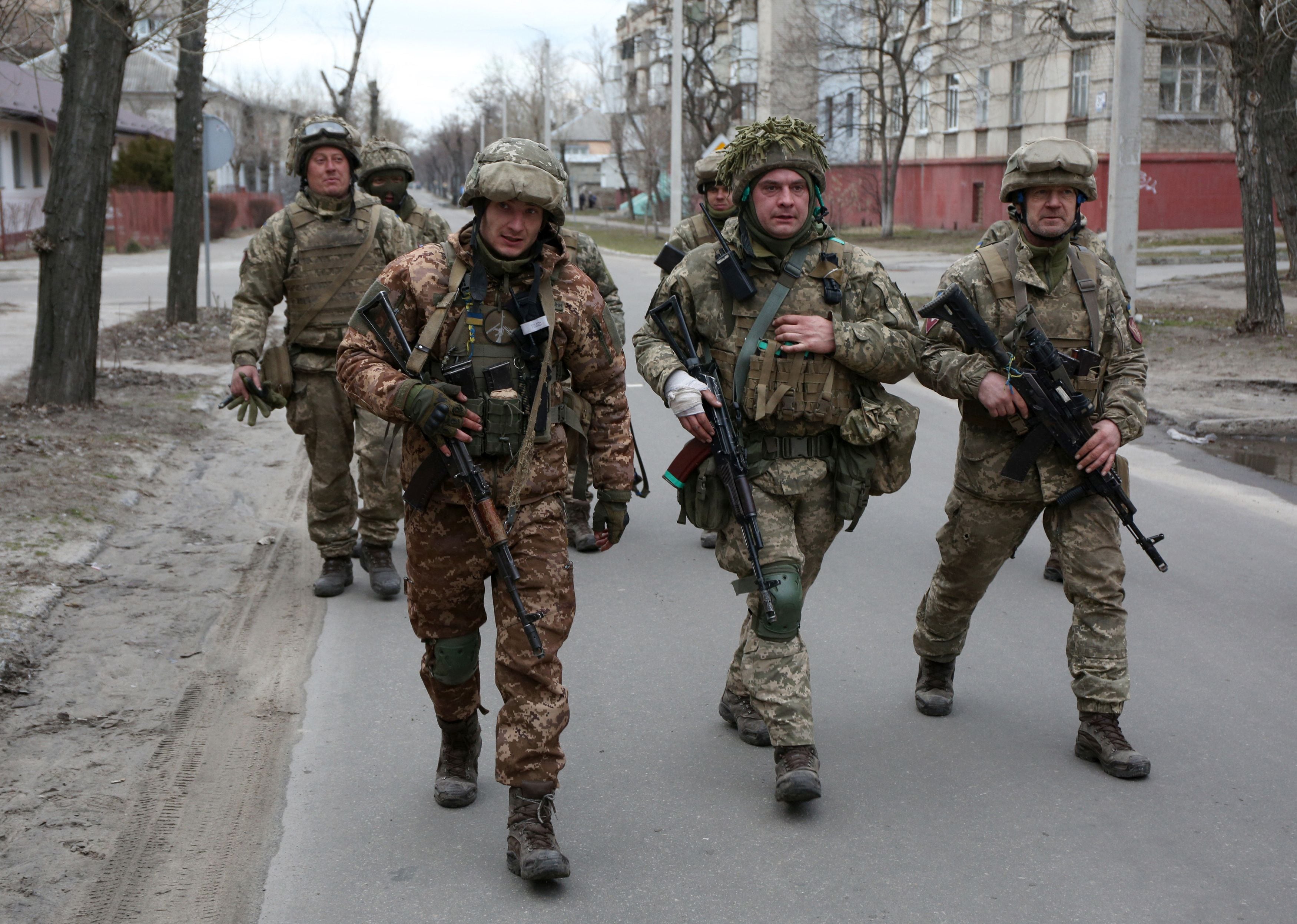
Zelenskyy said his country would stand strong in the face of difficult odds as Russian forces hit cities with missiles and airstrikes, and a long column of troops and supplies wends its way closer to Kyiv.
“Nobody is going to break us,” he said. “We are strong. We are Ukrainians. We have a desire to see our children. Alive. I think it’s a fair one. Yesterday 16 children were killed. Again and again. President Putin is going to say that is some kind of operation and we are hitting a military infrastructure. Where our children? What kind of military factories do they work at? What tanks are they going with? Launching cruise missiles, he killed 16 people just yesterday.”
Despite the odds, Ukrainians “are very much motivated, very much so,” Zelenskyy said. “We are fighting for our rights. For our freedoms. For our life and now we’re fighting for our survival.”
And that, he said, “is the highest of our motivation. But we are fighting also to be equal members of Europe. I believe that today. We are showing everybody that’s exactly what we are.”
The European Union, said Zelenskyy, “is going to be much stronger with us. So that’s for sure. Without you, Ukraine is going to be lonesome.
“We have proven our strengths,” he said, closing out his speech. “We have proven that as at a minimum we are exactly the same as you. So do prove that you are with us. Do prove that you will not let us go. Do prove that you indeed are Europeans and then life will win over death and light will win over darkness. Glory be to Ukraine.”
Russians get closer to Kyiv
5:40 a.m. EST March 1
Russian shelling pounded civilian targets in Ukraine’s second-largest city again Tuesday and a 40-mile convoy of tanks and other vehicles threatened the capital — tactics Ukraine’s embattled president said were designed to force him into concessions in Europe’s largest ground war in generations.
With the Kremlin increasingly isolated by tough economic sanctions that have tanked the ruble currency, Russian troops attempted to advance on Ukraine’s two biggest cities. In strategic Kharkiv, an eastern city with a population of about 1.5 million, videos posted online showed explosions hitting the region’s Soviet-era administrative building and residential areas.
RELATED
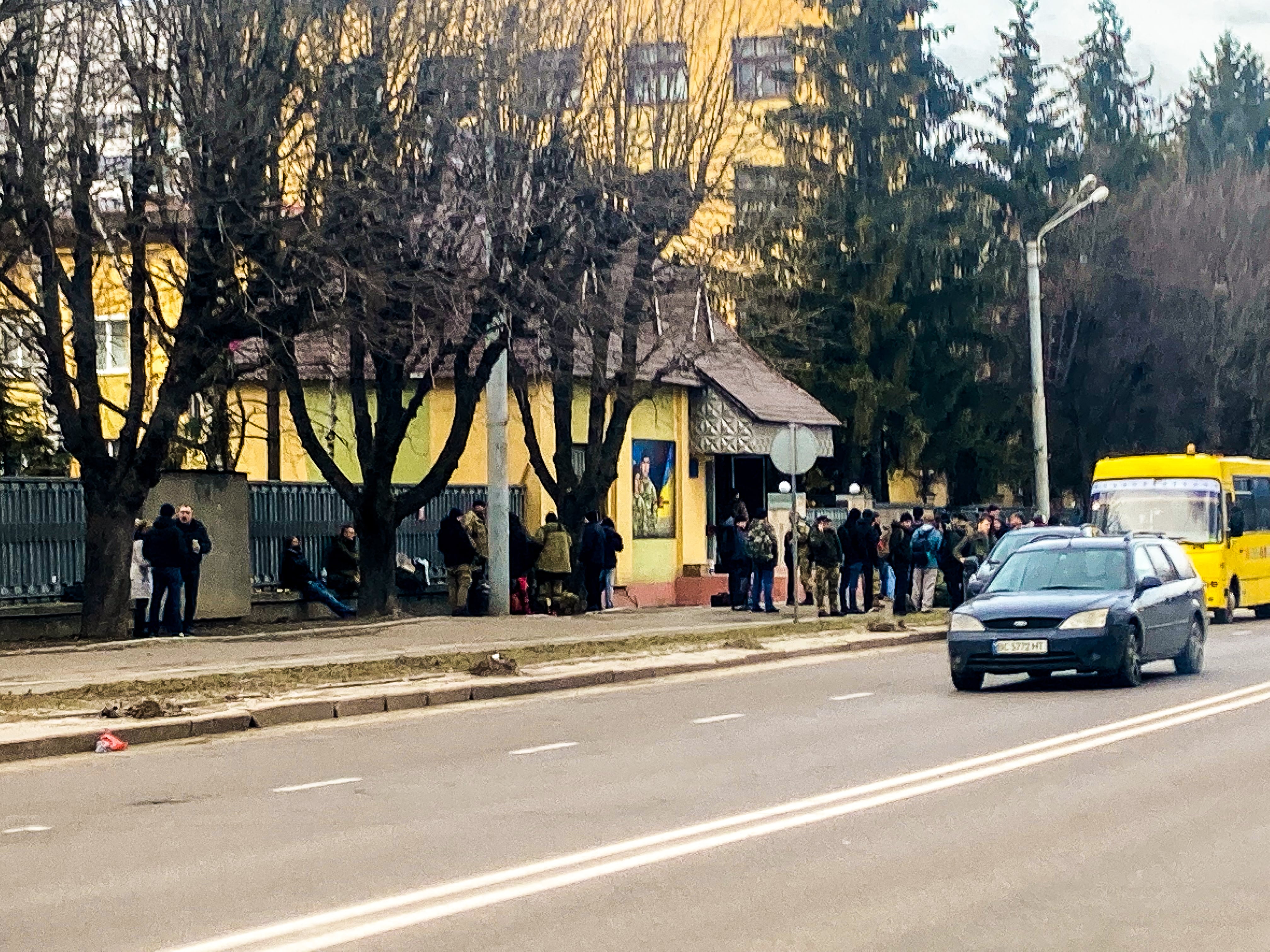
Throughout the country, many Ukrainian civilians spent another night huddled in shelters, basements or corridors.
The casualty toll mounted as Ukraine faced Day 6 of a Russian invasion that has shaken the 21st century world order. Hopes for a negotiated solution to the war dimmed after a first, five-hour session of talks between Ukraine and Russia yielded no stop in the fighting, though both sides agreed to another meeting in coming days.
With Western powers sending weapons to Ukraine and driving a global squeeze of Russia’s economy, President Vladimir Putin’s options diminished as he seeks to redraw the global map — and pull Ukraine’s western-leaning democracy back into Moscow’s orbit.
“I believe Russia is trying to put pressure (on Ukraine) with this simple method,” Ukrainian President Volodymyr Zelenskyy said late Monday in a video address, referring to stepped-up shelling. He did not offer details of the talks between Ukrainian and Russian envoys, but he said Kyiv was not prepared to make concessions “when one side is hitting another with rocket artillery.”
As the talks along the Belarusian border wrapped up, several blasts could be heard in the capital, and Russian troops advanced on the city of nearly 3 million. The convoy of armored vehicles, tanks, artillery and support vehicles was 25 kilometers (17 miles) from the center of the city and stretched about 65 kilometers (40 miles), according to satellite imagery from Maxar Technologies.
“They want to break our nationhood, that’s why the capital is constantly under threat,” Zelenskyy said, saying that it was hit by three missile strikes on Monday and that hundreds of saboteurs were roaming the city.

Kharkiv, near the Russian border, is another key target. One after the other, explosions burst through a residential area of the city in one video verified by AP. In the background, a man pleaded with a woman to leave, and a woman cried.
Determined for life to go on despite the shelling, hospital workers transferred a Kharkiv maternity ward to a bomb shelter. Amid makeshift electrical sockets and mattresses piled up against the walls, pregnant women paced the crowded space, accompanied by the cries of dozens of newborns.
The Russian military has denied targeting residential areas despite abundant evidence documented by AP reporters around Ukraine of shelling of homes, schools and hospitals.
Regional administration chief Oleh Sinehubov said that the administration headquarters in the city center also came under Russian shelling. Images posted online showed the building’s facade and interior badly damaged by a powerful explosion that also blew up part of its roof. The state emergencies agency said that attack wounded six people, including a child.
Sinehubov said that at least 11 people were killed and scores of others were wounded during Monday’s shelling of the city.
Meanwhile, flames shot up from a military base northeast of Kyiv, in the suburb of Brovary, in footage shot from a car driving past. In another video verified by AP, a passenger pleads with the driver, “Misha, we need to drive quickly as they’ll strike again.”
And Ukrainian authorities released details and photos of an attack Sunday on a military base in Okhtyrka, a city between Kharkiv and Kyiv, saying more than 70 Ukrainian soldiers were killed along with some local residents. The attack could not be immediately confirmed.
The Russian military’s movements have been stalled by fierce resistance on the ground and a surprising inability to dominate Ukraine’s airspace.
In the face of that resistance, the Kremlin has twice in as many days raised the specter of nuclear war and put on high alert an arsenal that includes intercontinental ballistic missiles and long-range bombers. Stepping up his rhetoric, President Vladimir Putin denounced the United States and its allies as an “empire of lies.”
Western nations have increased weapons shipments to Ukraine to help its forces defend themselves — but have so far ruled out sending in troops. Still, the embattled country moved to solidify its ties to the West by applying to join the European Union — a largely symbolic move for now, but one that won’t sit well with Putin, who was already infuriated by Ukraine’s desire to join the NATO alliance.
Messages aimed at the advancing Russian soldiers popped up on billboards, bus stops and electronic traffic signs across the capital. Some used profanity to encourage Russians to leave. Others appealed to their humanity.
“Russian soldier — Stop! Remember your family. Go home with a clean conscience,” one read.
Fighting raged in other towns and cities. The strategic port city of Mariupol, on the Sea of Azov, is “hanging on,” said Zelenskyy adviser Oleksiy Arestovich. An oil depot was reported bombed in the eastern city of Sumy.
Isachenkov reported from Moscow, and Miller from Washington. Francesca Ebel, Josef Federman and Andrew Drake in Kyiv; Mstyslav Chernov and Nic Dumitrache in Mariupol, Ukraine; and other AP journalists from around the world contributed to this report.
Howard Altman is an award-winning editor and reporter who was previously the military reporter for the Tampa Bay Times and before that the Tampa Tribune, where he covered USCENTCOM, USSOCOM and SOF writ large among many other topics.
Meghann Myers is the Pentagon bureau chief at Military Times. She covers operations, policy, personnel, leadership and other issues affecting service members.




